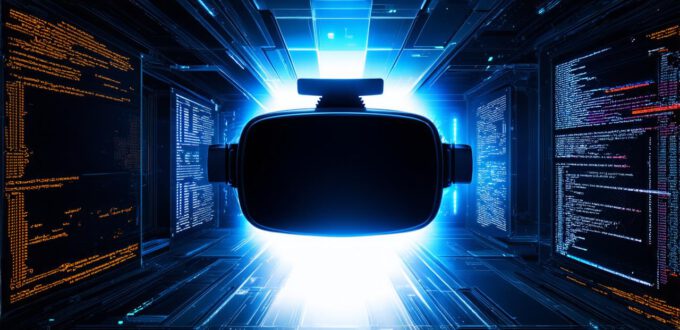Virtual Reality (VR) technology is revolutionizing the way we interact with digital content and experiences. With the rapid advancements in VR hardware, software, and development tools, VR application development has become more accessible and affordable than ever before.
Choosing the Right VR Development Service
When choosing a VR development service, it’s important to consider your project requirements, budget, and timeline. Here are some key factors to keep in mind when selecting a development service:
- Experience: Look for a service that has a proven track record of successful VR application development projects. This will ensure that they have the expertise and knowledge required to deliver a high-quality product that meets your needs.
- Portfolio: Check out the portfolio of the service provider to see examples of their previous work. This will give you an idea of the types of projects they’ve worked on and the quality of their work.
- Communication: Good communication is essential when working with a development service. Look for a service that provides regular updates and clear, concise communication throughout the project.
- Support: Ensure that the service provider offers ongoing support and maintenance to ensure that your VR application continues to function optimally after launch.
- Budget: Determine your budget for the project and find a development service that fits within your budget. Be sure to get detailed cost estimates and a clear breakdown of all expenses involved in the project.
Top VR Development Services
1. Unity 3D: Unity is one of the most popular game engines used for VR application development. It offers a wide range of tools and features that make it easy to create immersive experiences for a variety of devices. Unity also has a large community of developers and resources available, making it an excellent choice for beginners and experienced developers alike.
2. Unreal Engine: Unreal Engine is another popular game engine used in VR application development. It offers advanced graphics capabilities and support for a wide range of platforms, including PC, mobile, and consoles. Unreal Engine also has a large community of developers and resources available, making it easy to find help when needed.
3. A-Frame: A-Frame is an open-source framework for building VR applications using HTML and JavaScript. It’s designed to be easy to use and offers support for a variety of devices, including Oculus Rift, HTC Vive, and Google Cardboard. A-Frame also has a growing community of developers and resources available, making it an excellent choice for beginners.
4. Three.js: Three.js is a JavaScript library used for creating 3D graphics in the browser. It’s often used in conjunction with VR application development to create high-performance graphics and animations. Three.js is easy to use and offers support for a wide range of devices, making it an excellent choice for developers who want to create fast, immersive experiences.
5. WebVR: WebVR is an open-source project that aims to bring VR experiences to the web. It’s designed to be compatible with a variety of devices and platforms, including PC, mobile, and consoles. WebVR offers advanced graphics capabilities and support for a wide range of APIs, making it an excellent choice for experienced developers who want to create highly customized VR experiences.
Case Studies in VR Application Development
1. NASA VR Training: NASA has been using VR technology to train astronauts for space missions for over a decade. Their VR training program uses realistic simulations to replicate the conditions of space travel, allowing astronauts to practice complex tasks in a safe and controlled environment. The NASA VR training program has been proven to improve the efficiency and effectiveness of astronaut training, saving time and resources while ensuring that astronauts are adequately prepared for the challenges of space travel.
2. IKEA AR App: IKEA’s AR app allows users to visualize furniture in their home before making a purchase. The app uses augmented reality technology to overlay 3D models of IKEA products onto the user’s environment, allowing them to see how the furniture would look and fit in their space. The IKEA AR app has been downloaded millions of times and has been credited with increasing sales for the furniture retailer.
3. Virtual Therapy: Virtual reality technology is increasingly being used in healthcare to treat a variety of conditions, including anxiety, depression, and PTSD. Virtual therapy uses immersive environments and realistic simulations to replicate real-world situations and help patients confront their fears and overcome them. The use of virtual therapy has been shown to be highly effective, with many patients experiencing significant improvements in their mental health after completing treatment.
4. Aviation Training: VR technology is being used increasingly in aviation training to simulate complex scenarios and help pilots prepare for real-world situations. For example, the US military uses VR simulations to train soldiers on how to use equipment and navigate in combat zones. These simulations allow pilots to practice their skills in a safe and controlled environment, reducing the risk of accidents and improving overall performance.
5. Architectural Visualization: VR technology is
